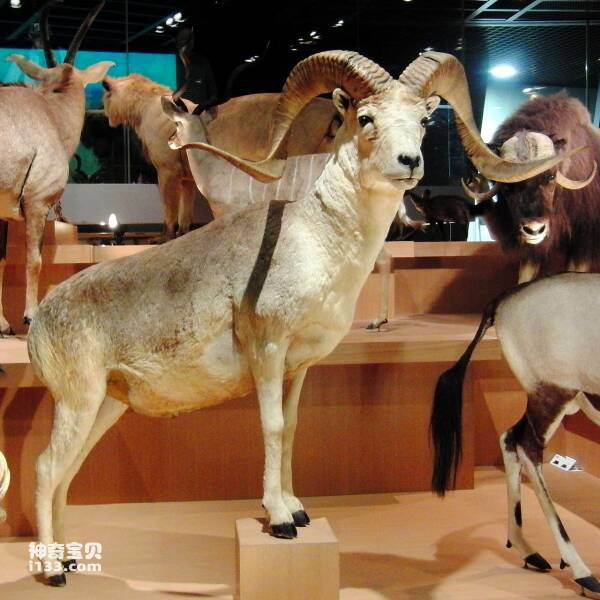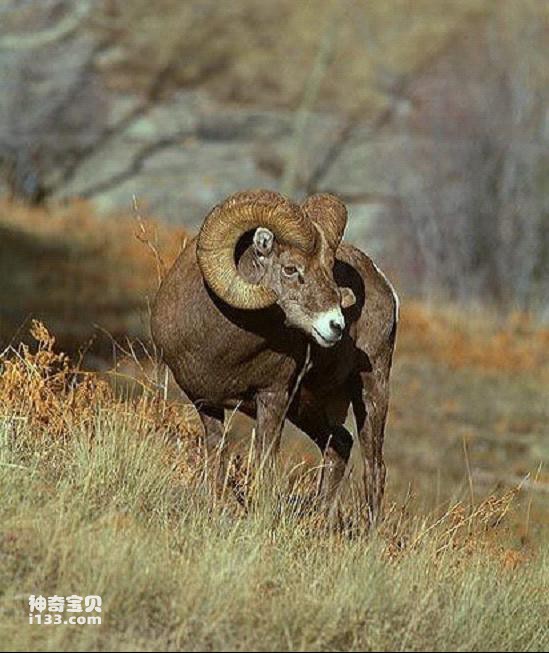Argali sheep (scientific name Ovis ammon), also known as big-headed sheep and bighorn sheep in ancient times, is a wild sheep that lives on the Central Asian plateau and is also the largest sheep. According to different distribution areas, it can be divided into 9 subspecies.
1. Distribution
Argali live in many mountain ranges in Central Asia. Their distribution areas range from the Altai Mountains, Southern Siberia, Mongolia, Tibet, and the Tianshan Mountains to Nepal and the Pamir Plateau. They can survive at a height of 7,000 meters.
Due to hunting and competition from domestic animals, argali have become scarce almost everywhere, and in some areas they have completely disappeared. The argali are extinct in Northeast China, parts of Mongolia, southern Siberia, Kazakhstan and most of Uzbekistan. They are rare today in the Himalayas, Inner Mongolia, much of Tibet, and Xinjiang. Only a few survive in Russia's Altai Mountains.
Populations of all subspecies have declined, and the total number of argali sheep in Asia is estimated to be less than 80,000. At present, their main distribution areas are in parts of Tajikistan, Kyrgyzstan and Mongolia.

2. Characteristics
Male beasts in the northeastern region of the distribution area can reach a shoulder height of 120 centimeters and a weight of 200 kilograms. Animals in the southwest are generally smaller.
The color of plate wool ranges from light brown to white gray, with the chest and abdomen being lighter in color. The necks of males of most subspecies are white. They do not have a mane similar to that of a red sheep.
The male's horn is thick, more than 1 meter long, twisting downward in a spiral shape, with a ring on the outside; the female's horn is very short and not very curved.

3. Habits
The argali is a social animal, and its habits are the same as those of other wild sheep. Outside the estrus period, rams and ewes each form groups of about five to ten sheep. Estrus occurs in winter so that lambs can be born in spring.
Argali sheep live on grass and leaves.
The argali's legs are relatively long and its body is relatively thin. Compared with other wild sheep, its climbing skills are poorer. Therefore, when escaping, it generally avoids escaping to steep hillsides.
4. Origin
The argali is the basal species of the white bighorn sheep (Ovis dalli) and the Canadian argali (Ovis canadensis) in North America. The transitional type between them is the snowy mountain argali (Ovis nivicola) in Eastern Siberia. These sheep arrived in North America during the last wave of migration during the late Pleistocene. Like the bison-yak sister group relationship, a fondness for cold and alpine environments appears to be a significant link between these ovine species. Argali are now distributed on the Qinghai-Tibet Plateau and the mountains to the west and north. During the Pleistocene period, their distribution range was wider, possibly as far west as France. They are also considered to be cold-loving animals of the Ice Age.
animal tags:
We created this article in conjunction with AI technology, then made sure it was fact-checked and edited by a Animals Top editor.